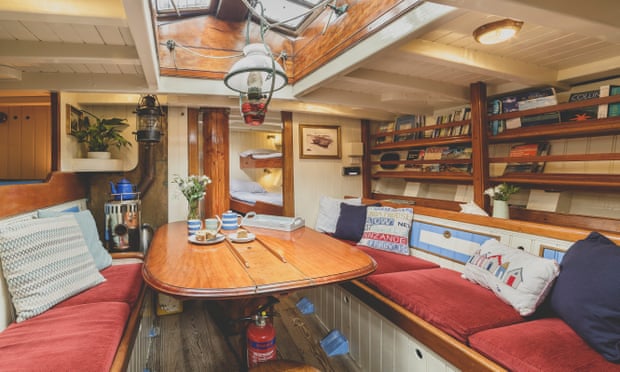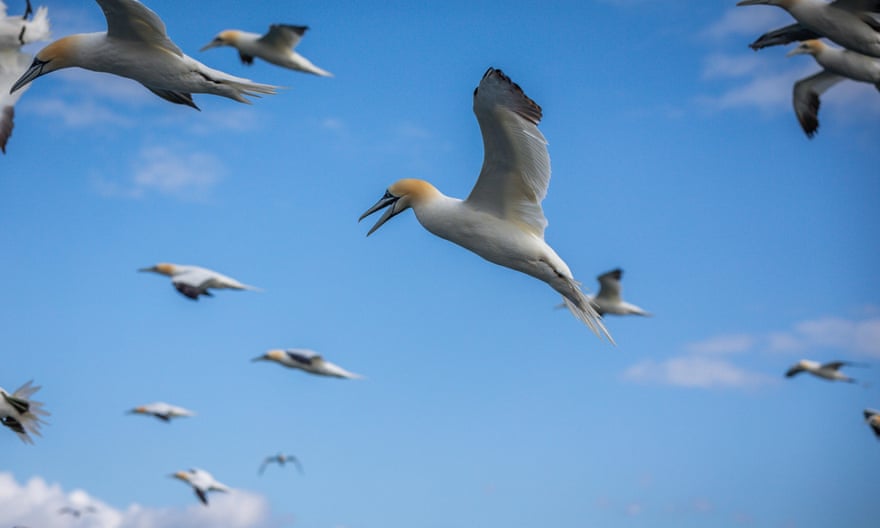All hands on deck: a sailing adventure on the Cornish coast | Sailing holidays
“You’ve got your weather report and your sailing experience, but you never really know what you’re going to find until you get out there,” said Gabe, skipper of the 14-metre pilot cutter Agnes, when I asked him what we could expect. The prediction was for strong winds from the east, promising a wild ride to Fowey as we set out from Falmouth on our three-day voyage along the coast.
Beyond the calm waters of Falmouth harbour there was a heavy swell, but the 30mph winds did not materialise. There was plenty to fill the sails, though, and leaving behind the derricks and cranes of Falmouth’s industrial waterfront on a wooden boat almost identical to those that sailed around nearby Scilly almost 200 years ago felt to me as though we were stepping back in time as much as heading out to sea.

As we made our way along Cornwall’s south coast, Gabe decided we needed to hoist another sail to drive us through the heaving waves. I’d been given the job of raising it and was looking at four identical halyards – the ropes used to haul up the sails – trying to work out which one I should untie. I picked a line and Felix, the boat’s mate, tapped a different one as he passed and said with a grin: “That one might work better.”
Had I untied my initial choice I might have brought the boat’s huge mainsail crashing down on our heads. Felix was still smiling, though, as he gave instructions to two of the other five guests standing on the foredeck. We were four hours into our first day on board and were still, quite literally, learning the ropes, though the satisfaction of seeing the sails fill high above the deck was worth any missteps. We were rewarded with a shift in power as the wooden hull drove through the water, the sea spray began to fly, and we began to feel we were an essential part of bringing the boat to life.

The frenetic activity of sailing was interspersed with regular lulls in which coffee and cake appeared, and meals that were improbably impressive given the tiny size of the boat’s galley. There was time, too, to watch out for wildlife. Along this stretch of coast I had seen a minke whale and a pod of common dolphins in the previous weeks, though the sea state that morning meant we were unlikely to spot either, even if they were there. Instead, we watched gannets dive, bullet-like, into the dark water, and guillemots and Manx shearwaters as they skimmed the waves. On the other side of the boat, the coastline of the Roseland peninsula looked almost entirely unspoiled.
Constructed by the renowned boatbuilder Luke Powell, Agnes is a replica of the pilot cutter that served the Scilly island from which it took its name. From the outside at least, Agnes looks much as its namesake would have done in the mid-1800s. At that time, Agnes was used to guide ships through the treacherous maze of shallow waters and hidden ledges around the island archipelago that lies 28 miles off the Cornish coast. Competition for business was fierce, with the first boat out to an incoming ship earning the commission for bringing it in safely.

Our small band of sailors, most of whom had met earlier that day, might not have passed muster with the captains of old, though. Gabe told me enthusiasm and willingness to learn were more important on this trip than experience. While most of us had sailed before, one freely admitted he did not know one end of a halyard from the other. I had been sailing, though mainly on dinghies with my children. But a boat like Agnes – with few of the technologies of modern vessels – is a leveller, emerging from another time.
After the uncomfortable sea swell, the calm of Fowey was welcome and we moored beneath the blue-and-white frontage of Ferryside, the house where Daphne du Maurier lived in the late 1920s. As we sat on deck in the evening calm, a heron flew across the water and landed silently in the shallows between us and Du Maurier’s house. We listened to owls hooting at one another in the woods above the water, as a hectic day gave way to a quiet night.
By the time Du Maurier arrived in Cornwall, boats such as Agnes were already a thing of the past, pushed out by the more powerful Falmouth pilot cutters that muscled in on their territory, then superseded by steamships that did not need to stop at the Isles of Scilly before reaching the mainland. Boatbuilders such as Powell, with their passion for the high-performance crafts of the time, have kept their spirit alive, and Cornwall is all the richer for it.

While Agnes’s decks might have felt like home to the original crews, they would not have recognised our…
Read More: All hands on deck: a sailing adventure on the Cornish coast | Sailing holidays

